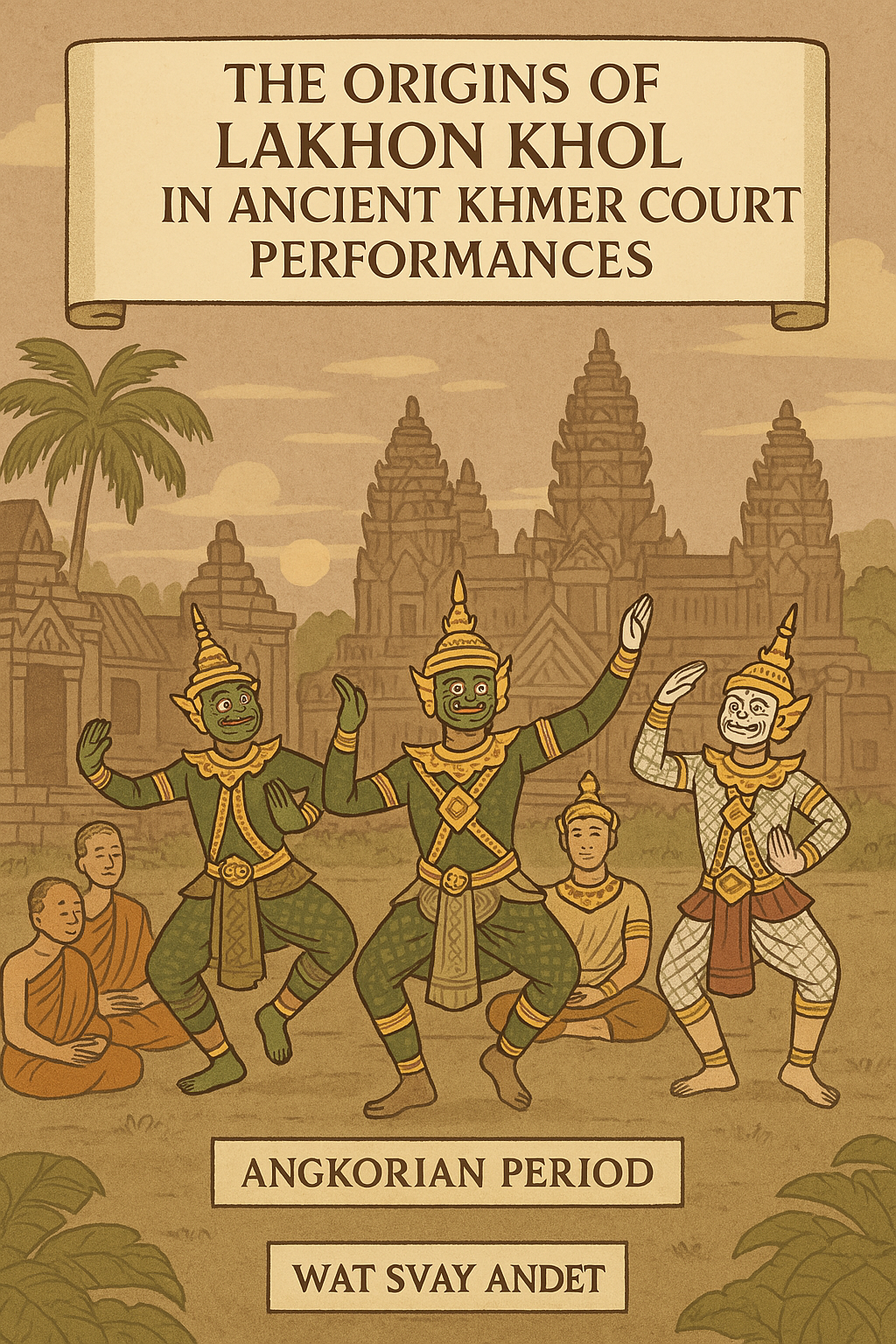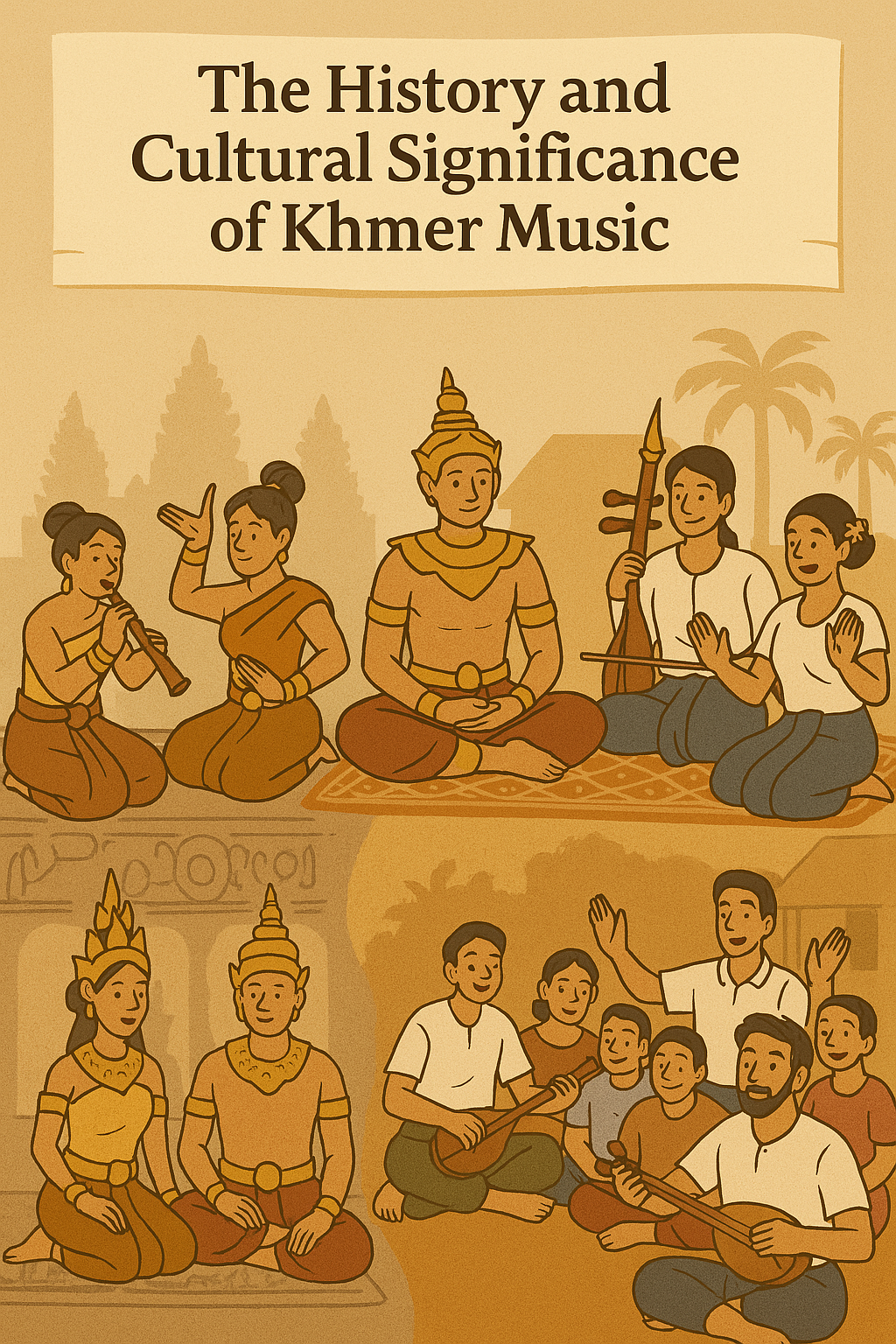Lakhon Khol is a mesmerizing fusion of drama, dance, music, and mythology—a performance tradition that transforms ancient epics into dynamic storytelling through elaborate masks, rhythmic chants, and sacred gestures. Rooted in Cambodia’s royal courts, Lakhon Khol stands as a powerful symbol of Khmer identity, spiritual resilience, and artistic mastery.

1. The Origins of Lakhon Khol in Ancient Khmer Court Performances
Lakhon Khol traces its roots to the Angkorian period, where it was performed exclusively in royal and temple settings. The earliest evidence appears in temple carvings from the 10th–13th centuries, notably at Wat Svay Andet and Angkor Thom. The dance was part of sacred ceremonies and court rituals, symbolizing divine kingship and cosmic harmony.
Traditionally performed by all-male troupes, Lakhon Khol was deeply intertwined with Brahmanical-Hindu court culture, and its preservation was often entrusted to temple priests or royal instructors.
2. The Influence of Hindu Epics (Ramayana/Reamker) in Lakhon Khol
Lakhon Khol dramatizes episodes from the Reamker, the Cambodian adaptation of the Indian Ramayana. This epic tells the story of Preah Ream (Rama) and Neang Seda (Sita), battling evil forces led by the demon king Krong Reap (Ravana), with the aid of the monkey general Hanuman.
These tales are not only heroic adventures—they embody Khmer values:
- Loyalty and dharma (moral duty)
- The balance between good and evil
- Sacrifice for the greater good
The Reamker remains a cornerstone of Cambodian cultural identity, echoed in visual art, literature, and sacred drama like Lakhon Khol.
3. The Meaning Behind the Elaborate Masks and Costumes
Lakhon Khol is instantly recognizable by its ornate masks (khol) and costumes, which carry deep symbolic meanings:
- Masks: Crafted from papier-mâché and resin, each represents a specific character—green for demons, white for Hanuman, gold for divine beings.
- Costumes: Inspired by ancient Khmer royal attire, with brocade textiles, chest jewelry, embroidered sashes, and crowns.
- Details: Every color, ornament, and accessory aligns with the mythology and personality of the character being portrayed.
The process of mask-making is itself a sacred art, traditionally undertaken by spiritual artisans, involving rituals to ensure spiritual protection and proper storytelling alignment.
4. The Role of Music and Chanting in a Lakhon Khol Performance
A Lakhon Khol performance is immersive and rhythmic, thanks to:
- The Pin Peat orchestra, which drives the pace and emotion with xylophones (roneat), gongs, drums (skor), and reed instruments.
- Narration and chanting (Smot): A lead narrator chants the verses, reciting poetic dialogues while dancers mime and act out the scenes.
- No spoken words from performers—meaning is conveyed entirely through gesture, posture, and movement.
The synergy between sound and motion creates a spiritual atmosphere, transforming performance into ritual theater.
5. How Lakhon Khol Differs from Other Southeast Asian Masked Dances
While Lakhon Khol shares roots with classical dances in Thailand, Laos, and Indonesia, it retains unique Khmer traits:
| Feature | Lakhon Khol (Cambodia) | Khon (Thailand) | Wayang Wong (Indonesia) |
|---|---|---|---|
| Language | Khmer poetic verse (Reamker) | Thai Ramakien | Javanese Ramayana |
| Gender Roles | Traditionally all-male | Mixed or male-only | Mixed or male-only |
| Costumes & Masks | Khmer-specific mythological styles | More gold embroidery, refined | Javanese-Balinese influence |
| Music Ensemble | Pin Peat (Khmer classical) | Piphat (Thai classical) | Gamelan (Indonesian) |
| Purpose | Ritual and spiritual performance | Royal entertainment | Storytelling and moral lesson |
Lakhon Khol is more ceremonial and spiritually charged, often performed at temples and during ancestral rituals.
6. The Struggle to Keep Lakhon Khol Alive in Modern Cambodia
Lakhon Khol, like many traditional arts, faced near extinction during the Khmer Rouge regime. Many masters were lost, temples destroyed, and performance traditions disrupted. However, its recent revival symbolizes cultural resilience:
- Wat Svay Andet Troupe: One of the few groups maintaining the tradition through community and monastic training.
- UNESCO Recognition: In 2018, Lakhon Khol was added to the List of Intangible Cultural Heritage in Need of Urgent Safeguarding.
- Government & NGO Support: Cultural programs and scholarships now aim to train young performers and mask artisans.
- Modern Showcases: Performances are now featured at cultural festivals, schools, and museums, bringing Lakhon Khol to a new audience.
Yet challenges remain: funding, limited audience reach, and generational interest must be addressed to ensure survival and evolution.
Conclusion: A Sacred Masked Legacy in Motion
Lakhon Khol is more than an art—it is a spiritual performance, a vessel of myth and morality carried across centuries by disciplined dancers and sacred storytellers. Each gesture, chant, and mask embodies the Khmer soul—resilient, graceful, and proud.
Preserving Lakhon Khol is not just about safeguarding a tradition; it’s about protecting the identity of a nation, ensuring that the echoes of ancient kings, gods, and heroes continue to dance in the hearts of future generations.





